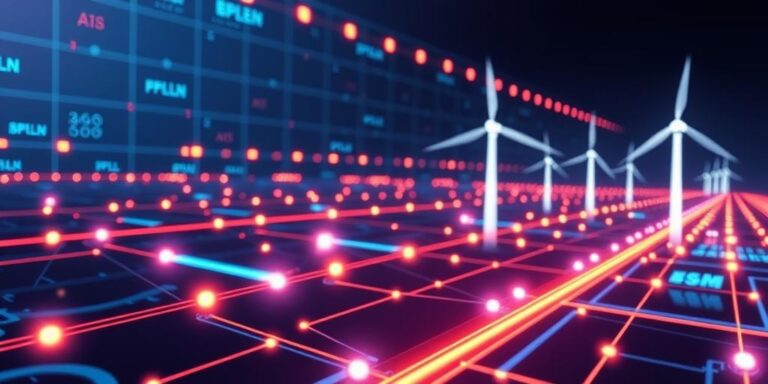The Future of Energy Grids with AI Optimization (2025-2030)
As we look towards the latter half of the 2020s, the integration of Artificial Intelligence (AI) into energy grids is no longer a futuristic concept but a rapidly approaching reality. This article explores how AI optimization will revolutionize energy distribution, management, and sustainability between 2025 and 2030.
Current Challenges in Energy Grid Management
Before delving into the future, it’s crucial to understand the present-day challenges:
- Demand Fluctuations: Energy demand varies significantly throughout the day and across seasons, making it difficult to maintain a stable supply.
- Aging Infrastructure: Much of the existing grid infrastructure is aging, leading to inefficiencies and increased risk of failures.
- Integration of Renewable Energy: The intermittent nature of renewable energy sources like solar and wind poses challenges for grid stability.
- Data Overload: The sheer volume of data generated by modern grids is overwhelming, making it difficult to extract actionable insights.
AI-Powered Solutions for Energy Grids
AI offers a range of solutions to address these challenges, transforming energy grids into intelligent, adaptive systems.
-
Predictive Maintenance: AI algorithms can analyze data from sensors and historical records to predict equipment failures before they occur. This allows for proactive maintenance, reducing downtime and extending the lifespan of grid assets.
-
Demand Forecasting: Advanced AI models can forecast energy demand with greater accuracy, enabling grid operators to optimize energy generation and distribution. This leads to reduced waste and improved efficiency.
-
Smart Grid Optimization: AI can optimize the flow of energy across the grid in real-time, balancing supply and demand while minimizing losses. This includes dynamic pricing models that incentivize consumers to shift their energy usage during peak times.
-
Renewable Energy Integration: AI algorithms can predict the output of renewable energy sources and adjust grid operations accordingly. This ensures a stable and reliable supply of energy, even with high penetration of renewables.
-
Anomaly Detection: AI can detect anomalies and cybersecurity threats, protecting the grid from disruptions and ensuring the security of critical infrastructure.
Expected Outcomes (2025-2030)
By 2030, the widespread adoption of AI in energy grids is expected to yield significant benefits:
- Increased Efficiency: AI optimization will reduce energy waste and improve the overall efficiency of the grid, leading to lower energy costs for consumers.
- Enhanced Reliability: Predictive maintenance and anomaly detection will minimize downtime and ensure a more reliable supply of energy.
- Greater Sustainability: AI-powered solutions will facilitate the integration of renewable energy sources, reducing reliance on fossil fuels and lowering carbon emissions.
- Improved Resilience: AI will enhance the grid’s ability to withstand disruptions, such as extreme weather events and cyberattacks.
Challenges and Considerations
Despite the promising outlook, several challenges must be addressed to fully realize the potential of AI in energy grids:
- Data Privacy and Security: Protecting sensitive data from unauthorized access is crucial. Robust cybersecurity measures and data encryption techniques are essential.
- Algorithm Bias: Ensuring that AI algorithms are fair and unbiased is vital. Careful attention must be paid to the data used to train these algorithms.
- Skills Gap: A shortage of skilled professionals with expertise in both AI and energy systems could hinder adoption. Investment in education and training is necessary.
- Regulatory Framework: Clear and consistent regulations are needed to govern the use of AI in energy grids, ensuring safety, reliability, and fairness.
Conclusion
The integration of AI into energy grids is poised to transform the energy landscape between 2025 and 2030. By addressing the challenges and embracing the opportunities, we can create a more efficient, reliable, sustainable, and resilient energy future.




